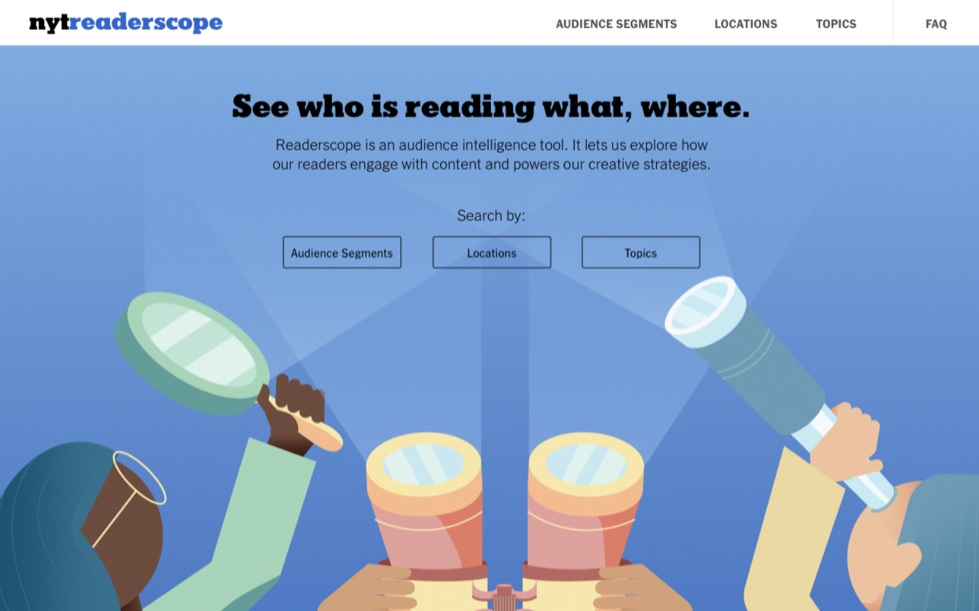About 15 years ago, when I worked for a daily newspaper in Northern California, I was in a meeting with my editor and other reporters discussing the type of stories our team should focus on in the coming year. I was a new reporter, and somewhat shy, but after 30 minutes of hearing ideas that seemed designed to compete for journalism awards, I piped up. “Maybe we should think about what our readers want to read?” I said. Dead silence. With a thank you from my editor, we moved on.
That day is frozen in my memory because it speaks, on one level, to where newspapers went wrong and why today the these once-champions of the advertising industry today find themselves in dire straits. After the exceptional coverage of Watergate, and despite studies demonstrating that the story of malfeasance by President Nixon did not generate additional revenue (McChesney, 1987), newspapers, intoxicated by accolades and awards, began to focus on investigative reporting. They lost track of their core customer, the reader, who attracted advertisers, who in turn supplied the profits. Before the digital explosion, newspapers were awash in profits from advertising dollars. Many daily papers held monopolies in their markets, and enjoyed profit margins of 20 percent in the mid-1980s (Jones, 1991). Newspapers were advertising delivery systems. However, the business model could not function without loyal readers who wanted news and subscribed to newspapers.
Fast forward to 2019. The New York Times editor Dean Baquet was quoted as saying “most newspapers in America are going to die in the next five years, except for the ones that have been bought by a local billionaire” (Guthrie Weissman, 2019, para. 3). In 2017, total circulation for U.S. newspapers was 31 million for weekday and 34 million for Sunday, in comparison to 51 million for both weekday and Sunday 10 years earlier in 2007 (Newspapers Fact Sheet, 2018)

In this sea of gloom, The New York Times serves as a beacon of hope. The 167-year-old newspaper has successfully deployed marketing strategies to increase awareness for the importance of news through its “Truth is Hard” campaign (Whiteside, 2019). It has also increased the channels through which it can leverage its brand to attract additional ad dollars. For example, The New York Times has diversified its portfolio of content delivery by adding a weekday podcast addressing big stories of the day, a soon-to-be launched documentary television series on FX and Hulu platforms, and a virtual reality app that provides viewers with realistic images of stories.
Perhaps more importantly, the newspaper is behaving like Facebook. The paper launched T Brand Studio, which helps advertisers develop and deliver content (Whiteside, 2019). The New York Times Co. offers Readerscope, an artificial intelligence (AI) application that, when launched this fall, will allow the newspaper to delve deeply into readership segmentation and track content chosen by customers (Precourt, 2019). The AI component will help advertisers more precisely target specific audiences. Furthermore, The New York Times scores the sentiment of its content, providing advertisers with the opportunity to align message with the emotion evoked, or absent, in The New York Times’ content (Precourt, 2019). Clearly, the paper is thinking about building its advertising revenues by better understanding the interests and tastes of its readers.

Times editor Baquet recently noted, “The original Innovation Report essentially said we didn’t think about our audience, and it was right. Now we talk about our audience every day in our daily meeting. Does that mean we chase clicks? No. It means we want to understand what people are reading” (World Congress Blog, 2019, para. 32).
As I reflect on the regional newspaper where I launched my career, I ponder whether it is too late for my old workplace. The paper may be one of the local institutions snuffed out, as Baquet predicts, in five years. Then I shift to what The New York Times is doing to save itself. I now turn to you, my reader, and ask, is it enough? Will The New York Times save journalism by remembering that a newspaper is an advertising vehicle that profits by serving its readers?
References
Newspapers Fact Sheet. (2018, June 13). Pew Center for Research. Retrieved from https://www.journalism.org/fact-sheet/newspapers/
Guthrie Weissmann, C. (2019, May 21). NYT editor predicts almost all newspapers will die in 5 years. Retrieved from https://www.fastcompany.com/90353613/nyts-dean-baquet-most-local-newspapers-will-die-in-5-years
Jones, A. (1991, January 6) New York Times Archives: Rethinking newspapers. Retrieved from https://www.nytimes.com/1991/01/06/business/rethinking-newspapers.html
McChesney, F. (1987). Sensationalism, newspaper profits and the marginal value of Watergate. Economic Inquiry, 25(1), 135–144. https://doi.org/10.1111/j.1465-7295.1987.tb00728.x
Precourt, G. (2019, April). NY Times Co: AI offerings drive unprecedented audience insights. Retrieved from https://www-warc-com.libproxy1.usc.edu/content/article/event-reports/ny_times_co_ai_offerings_drive_unprecedented_audience_insights/126890
Whiteside, S. (2019, March). How The New York Times views news and ads in the digital age. Retrieved from https://www-warc-com.libproxy1.usc.edu/content/article/event-reports/how_the_new_york_times_views_news_and_ads_in_the_digital_age/125726

3 Responses to Newspapers: Where Readers Go, Ads Will Follow